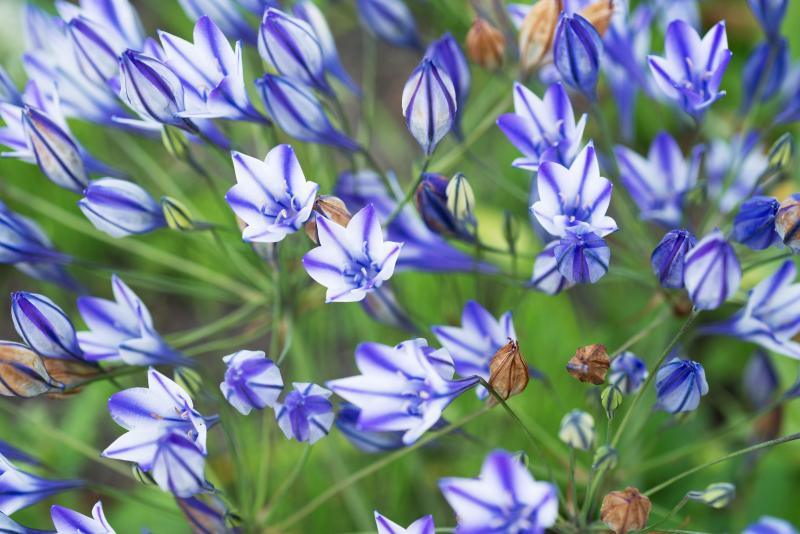Splash your spring garden with Aquarian-blue wildflowers
The mythical water carrier Ganymede was a beautiful Phrygian youth who, while tending to his father's flocks on Mount Ida, was spotted by Zeus, king of the gods, who fell in love with him. Zeus transformed into an enormous bird, whisking Ganymede into the heavens.
The constellation Aquarius, aka the Water Carrier, gives its name to an equally magical flower, Triteleia Aquarius. These magnificent Aquarian-blue, double-flowered blooms quickly fill in gaps or bare spaces after earlier spring flowers and before summer bloomers. Triteleia Aquarius bursts with bunches of 1-inch flowers in a deep, rich blue that is perfect in sunny borders and spectacular in mass plantings. As a bonus, they are usually not eaten by deer or most other animals. This is a selection of an American native wildflower that is not only hardy but also makes a terrific cut flower. Its brilliant blue colors go well when planted near pink, yellow, cream or white flowers.
The 12- to 16-inch-tall stems appear in very early spring, then fade away as the plants bloom. These flowers attract all sorts of beneficial pollinators including bees, hummingbirds and butterflies. Triteleia Aquarius is hardy in USDA Zones 5-9.
Triteleia Aquarius grows from small bulb-like structures called corms, which are just enlarged underground stems that store nutrients. Corms have a center made of solid tissue, while bulbs contain immature layers of leaves. Other plants that grow from corms include Jack-in-the-Pulpit, gladiolus, crocus and even bananas.
Triteleia Aquarius flower corms are available where fall bulbs are sold or from specialty nurseries such as Van Bourgonien (www.dutchbulbs.com, phone 800-552-9996).
Plant the corms in the fall 3 to 5 inches deep and 2 to 4 inches apart in well-drained soil that gets full sun. In early spring, you can scratch into the flowerbed a slow-release organic bulb fertilizer or bone meal. Both of these fertilizers have a higher proportion of phosphorus, which helps root development. You can water them if there is a dry spell while they are blooming, but for the most part, these plants are totally carefree.
Your Triteleia Aquarius will spread and naturalize, forming nice colorful colonies. You can dig up and divide the corms yourself. Triteleia Aquarius produces offsets, also called pups, which are tiny, virtually complete daughter plants growing out of the original corms and genetically identical to the mother plant. Simply divide and replant them.
Plant Triteleia Aquarius this fall for a welcome burst of blue flowers next year. As for the constellation, Aquarius is remarkable as the radiant for several meteor showers including one that appears from about April 19 to May 28 every year. These meteors of the Eta Aquariid shower actually broke away from Halley's Comet hundreds of years ago. So your Aquarian show in the sky might match the Triteleia Aquarius shower in your garden.






















































